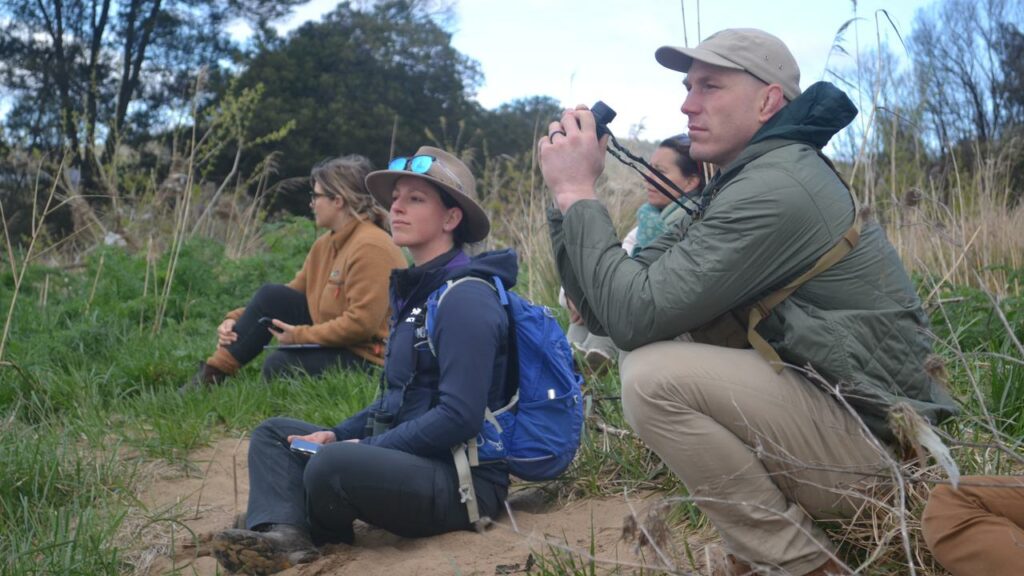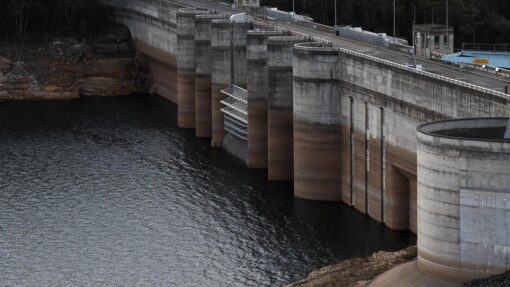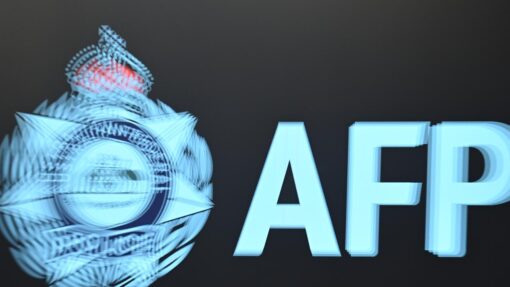Citizen scientists spot elusive platypuses
Marion Rae |

Australia’s iconic and lovably weird platypus is in decline but a citizen’s army of creek watchers is gathering data that could prove vital to its survival.
In the hope of seeing two bright eyes emerge from the water line or a ripple by a riverbank burrow, thousands of Australians have signed up for the Australian Conservation Foundation’s inaugural Platy-Project and headed outdoors.
The foundation recruited almost 4500 “citizen scientists” during September and recorded almost 800 sightings.
The best times to see a platypus are early morning or at dusk, but they have sensitive hearing and are easily disturbed so it’s best to find a likely spot and wait quietly.
On a trail that runs alongside one of the ACT’s newest suburbs, a dozen intrepid Canberrans and a couple of politicians gather early on a spring morning by a quiet bend in the Molonglo River to catch a glimpse of the monotreme.
The platypus, an egg-laying mammal with a rubbery duck bill, fur and webbed feet, is one of only three monotremes in the world, alongside Australia’s spiky echidna and Papua New Guinea’s long-beaked echidna.
Former Wallabies captain and ACT independent senator David Pocock has swapped his rugby boots for binoculars as he looks for the tell-tale signs of a ripple or bow-wave from paddling feet.
“There’s real power in getting involved,” he tells AAP.
“Spending time with people in the community and amazing places that we live – that’s what it’s all about.
“People can get involved in their local land care or park care group, or monitor platypus or birds.”
It’s also good for your mental health to get outside and be with people, he adds.
A map on the Platy-Project website has recorded sightings from the tropics in Queensland to Tasmania, cities in Victoria, NSW and South Australia and Kangaroo Island.
The population is strong in Tasmania, but past habitats appear to have been abandoned along waterways like the Yarra.
The sightings show up as colour-coded dots and citizen scientists can submit videos and photos as well.
The information is shared with the Atlas of Living Australia, which is available to all scientists, schools and community groups.
Platypuses are territorial and tend to remain in one location, but some prefer to set off on their own and explore, Shoshana Rapley, an ecologist at the Australian National University, explains.
The strangest place she has spotted a platypus was in a farm dam on top of a hill near Cairns, far from a waterway, which meant it must have trekked many kilometres.
The foundation says the platypus, called Mallangong, Tambreet, Gaya-dari, Boonaburra and Lar-re-lar in First Nations languages, is at risk of extinction in some areas where it used to range.
Designed by platypus researchers at the University of NSW, the Platy-Project map will collect data to help prevent further declines in one of the world’s oddest creatures.
“When platypuses were first discovered by Western science, the scientists in London thought it was a hoax – a duck’s bill, a beaver’s tail and the body of a mammal sewn together,” Jess Abrahams, a nature campaigner at the foundation, says.
“Actually, they’re incredibly unique creatures.”
Once their leathery eggs crack open the young – called puggles – suckle from two milk glands covered by fur on the female’s abdomen.
Paddling swiftly and easily like a beaver, the platypus is clumsier on land and walks with a waddle like a crocodile.
Mr Abrahams says climate change – not just low water flows, but extreme water flows – have had an impact, along with bushfires and the sediment that ends up in waterways.
Government ministers have to take advice on how significant a decline may be before they can list a species or ecosystem as in trouble, but they can’t take action if there is no information.
Scientists warn more species will be at risk in coming years, particularly as a result of the savage east coast 2019/20 bushfires.
The latest State of the Environment Report found the number of threatened species has risen eight per cent over a five-year period and climate change is putting pressure on every ecosystem in Australia.
But it’s hard to make a decision on anything without better information – for business and government, Mr Abrahams said.
Over time, the Platy-Project is designed to show whether areas that once had platypus populations have become habitats in decline.
Recent heavy rains mean the Molonglo River in the ACT is running swiftly, and the platypuses are keeping out of sight in the slower-moving depths.
But frog song – identified by Ms Rapley and immediately listed on a separate frog-spotting app – lifts the spirits of the local Australian Conservation Foundation ramblers.
ACT Environment Minister Rebecca Vassarotti says there’s a new spirit of cooperation around the table when federal, state and territory ministers meet.
“There’s a different vibe,” she says.
Asked whether he has hope for the environment, Senator Pocock says “we have an opportunity.”
AAP


